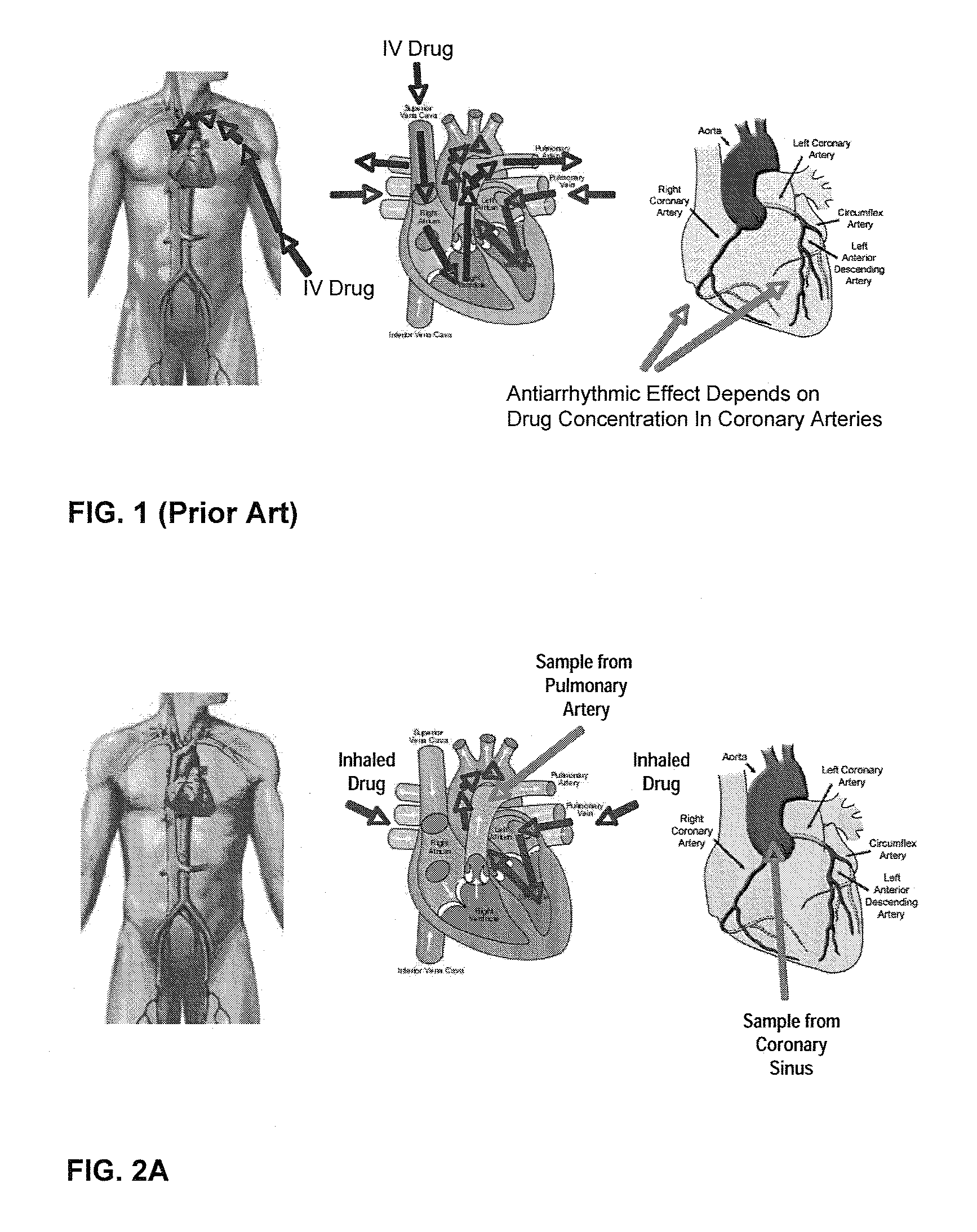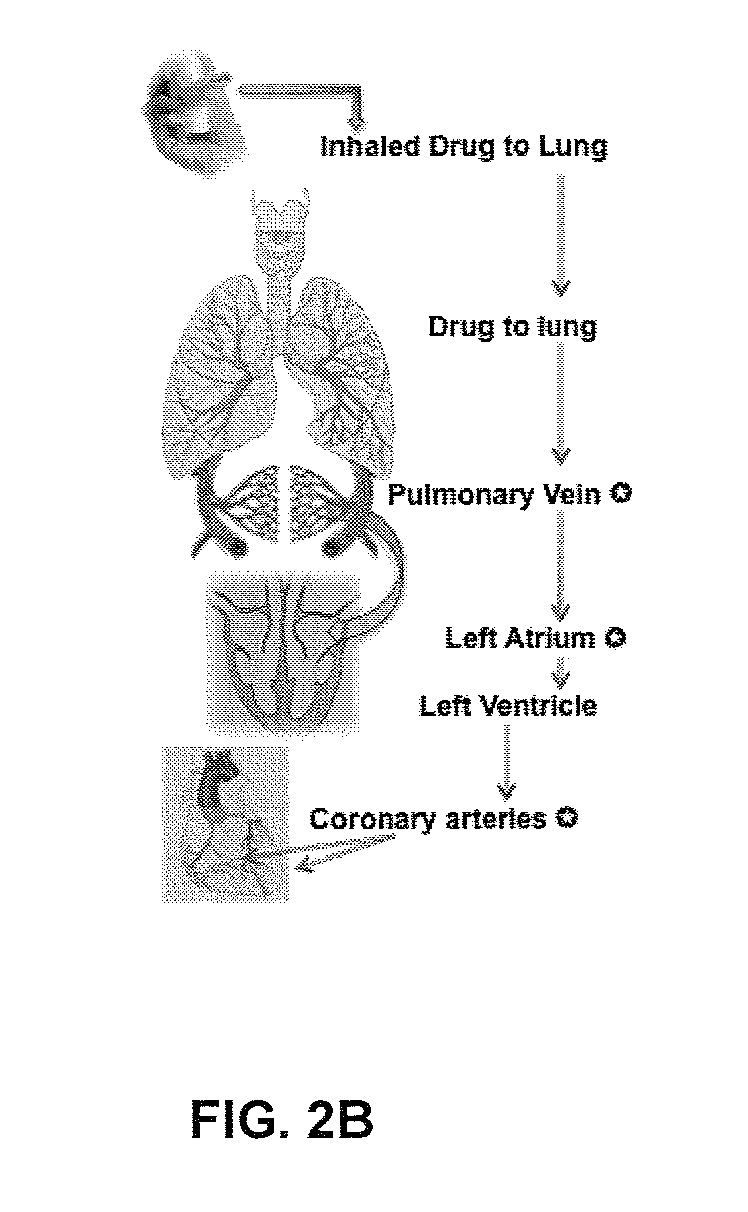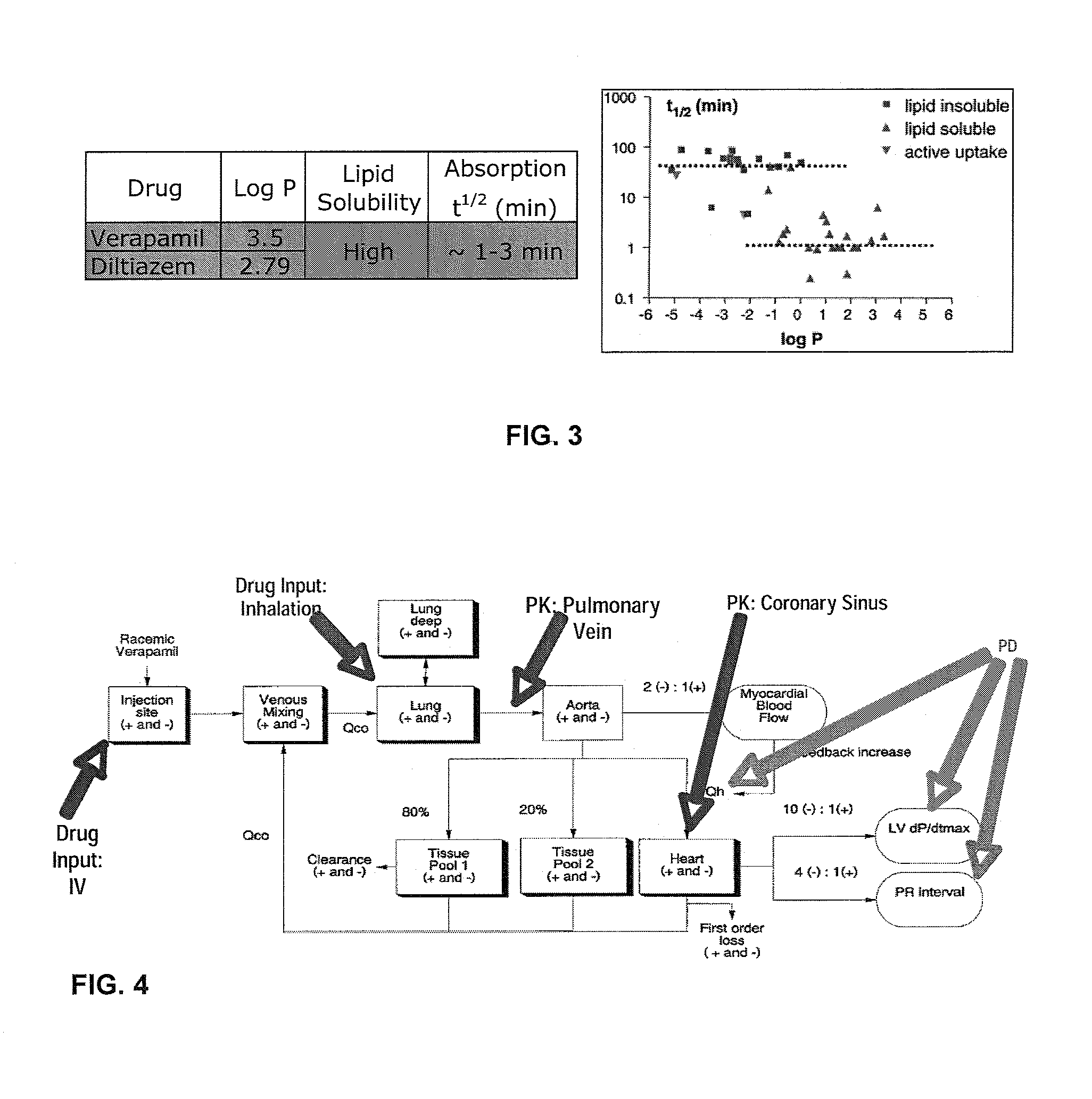Unit doses, aerosols, kits, and methods for treating heart conditions by pulmonary administration
a technology of pulmonary administration and composition, applied in the direction of aerosol delivery, respirator, therapy, etc., can solve the problems of many drugs used today, irregular or irregular heart beat, and inability to meet the needs of patients,
- Summary
- Abstract
- Description
- Claims
- Application Information
AI Technical Summary
Benefits of technology
Problems solved by technology
Method used
Image
Examples
example 1
Prophetic Analytical Model Involving Verapamil and Lidocaine
[0247]Published pharmacokinetic and pharmacodynamic models (FIG. 4) show relationships between drug concentration in coronary blood and desired coronary effect. IV drug information was used from published literature. HARRISON et al., “Effect of Single Doses of Inhaled Lignocaine on FEV1 and Bronchial Reactivity in Asthma,” Respir Med., 12:1359-635 (December 1992). Inhaled drug information was simulated based on known properties of pulmonary small molecule absorption.
[0248]FIG. 5 shows the different time concentration profiles of drug administered via the IV and inhalation routes. Verapamil was selected as an example heart drug as it possesses both cardiac rate and rhythm control properties and is often used to rescue acute arrhythmia episodes (e.g.: paroxysmal ventricular tachycardia and paroxysmal atrial fibrillation).
[0249]FIG. 6 also shows different time concentration profiles of drug administered via the IV and inhalati...
example 2
Effects of Intratracheal (IT) Administration of Anti-Arrhythmic Compounds on the Ventricular Response of Dogs with Induced Atrial Fibrillation and Supraventricular Tachycardia (SVT)
[0250]Objective:
[0251]To evaluate the effects / efficacy of common antiarrhythmic drugs when given via the pulmonary route, on the electrophysiological response of anesthetized dogs with induced atrial fibrillation and supraventricular tachycardia.
[0252]Animal Models Used
[0253]Atrial Fibrillation Model:
[0254]Anesthesia / Surgical Preparation:
[0255]A venous catheter was placed in a peripheral vessel (i.e., cephalic) for administration of anesthetic. For anesthesia induction, all animals were given morphine sulfate (˜2 mg / kg) and a bolus of alpha chloralose (˜100 mg / kg) intravenously through the venous catheter. Anesthesia was sustained with alpha chloralose (35-75 mg / kg / hour IV), until completion of the study (<2 hours). Following induction, animals were endotracheally intubated and mechanically ventilated (˜1...
example 3
Preliminary Evaluation of Solubility and Taste of Antiarrhythmic Pharmaceutical Agents when Administered as an Aerosol
[0290]Objective:
[0291]To evaluate the solubilities of flecamide acetate and diltiazem hydrochloride in water and to evaluate the acceptability of taste and aftertaste of these two drugs for administration as liquid aerosols.
[0292]Experiment and Observations:
[0293]Preformulation Studies:
[0294]Diltiazem's solubility was >90 mg / mL at room temperature. The pH of a 3.5 mg / mL solution of diltiazem in water was 6.7. At 50 mg / mL, a diltiazem in water solution was about 80% to isotonic.
[0295]Flecamide's solubility was about 30 mg / mL at room temperature. The pH of a 2.6 mg / mL solution of flecamide in water was 5.0. At 30 mg / mL, a flecamide in water solution was about 50% to isotonic.
[0296]The following solution strengths were prepared for taste evaluation: (1) diltiazem hydrochloride—50 mg / ml solution in distilled water; and (2) flecamide acetate—30 mg / ml solution in distilled...
PUM
| Property | Measurement | Unit |
|---|---|---|
| time | aaaaa | aaaaa |
| concentration | aaaaa | aaaaa |
| concentration | aaaaa | aaaaa |
Abstract
Description
Claims
Application Information
 Login to View More
Login to View More - R&D
- Intellectual Property
- Life Sciences
- Materials
- Tech Scout
- Unparalleled Data Quality
- Higher Quality Content
- 60% Fewer Hallucinations
Browse by: Latest US Patents, China's latest patents, Technical Efficacy Thesaurus, Application Domain, Technology Topic, Popular Technical Reports.
© 2025 PatSnap. All rights reserved.Legal|Privacy policy|Modern Slavery Act Transparency Statement|Sitemap|About US| Contact US: help@patsnap.com



